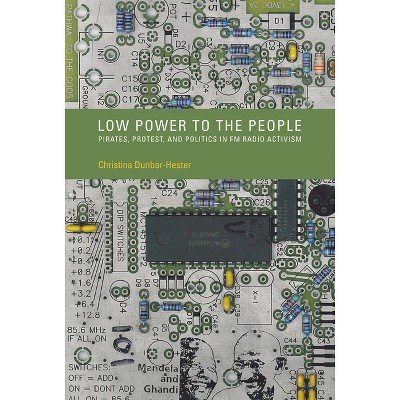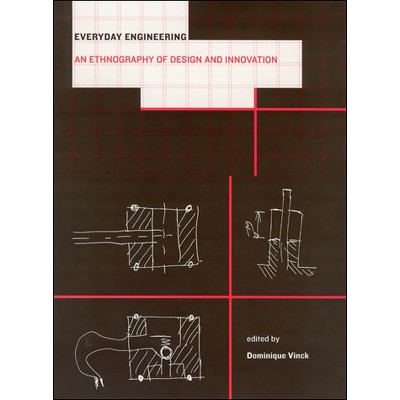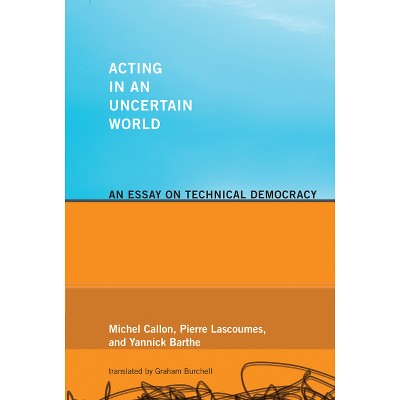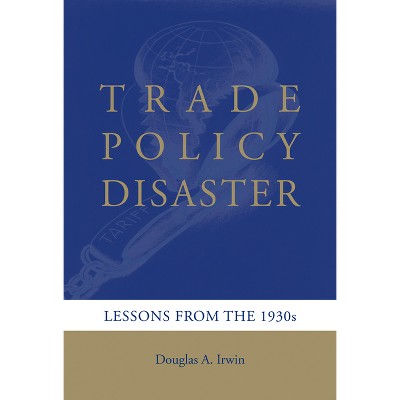Sponsored

Assetization - (Inside Technology) by Kean Birch & Fabian Muniesa (Paperback)
In Stock
Sponsored
About this item
Highlights
- How the asset--anything that can be controlled, traded, and capitalized as a revenue stream--has become the primary basis of technoscientific capitalism.In this book, scholars from a range of disciplines argue that the asset--meaning anything that can be controlled, traded, and capitalized as a revenue stream--has become the primary basis of technoscientific capitalism.
- About the Author: Kean Birch is Associate Professor in the Department of Geography at York University, Toronto.
- 344 Pages
- Business + Money Management, Economic History
- Series Name: Inside Technology
Description
About the Book
"This is a professional edited collection for the Inside Technology series looking at what the editors call assetization. They ask: what lies in the wake of commodification? How should we characterize and analyze technoscientific capitalism in the era of Uber and Airbnb, the business model sorcery of giants like Google and Genentech, rising immaterial and cognitive labor productivity represented by the explosion in Big Data, and the construction of population behavior as money-making resource? The editors define an asset as something-a piece of land, a skill or experience, a sum of money, a bodily function or affective personality, a life form, a patent or copyright, etc.-that can be owned or controlled, traded, and capitalized as a revenue stream, often involving the valuation of discounted future earnings in the present. Assets can certainly be bought and sold, yes. But the point is to get a durable rent from them, not to sell them away in the market today. How do things become assets, then? They are made so: the asset form is not, it is important to stress, the consequence of some inherent or embodied quality. The intention of this volume is to show how assets are constructed, how a variety of things are and can be turned into assets, examining the interests, activities, skills, organizations, and relations entangled in this process. Another is to stress that technoscientific capitalism entails specific practices that make the uncertainty inherent in innovation understandable and calculable as part of a broader capitalist system. The asset form reflects the tumult in contemporary technoscientific capitalism, in which it becomes harder and harder to draw clear boundaries around what counts as or comes to constitute capitalism How different is assetization from commodification? Which kind of legal constructions, political arrangements, and economic operations does it entail? Where does it find justification? What kind of critique does it call for? The research gathered in this edited volume opens directions in order to tackle these problems from a critical, qualitative perspective"--Book Synopsis
How the asset--anything that can be controlled, traded, and capitalized as a revenue stream--has become the primary basis of technoscientific capitalism.In this book, scholars from a range of disciplines argue that the asset--meaning anything that can be controlled, traded, and capitalized as a revenue stream--has become the primary basis of technoscientific capitalism. An asset can be an object or an experience, a sum of money or a life form, a patent or a bodily function. A process of assetization prevails, imposing investment and return as the key rationale, and overtaking commodification and its speculative logic. Although assets can be bought and sold, the point is to get a durable economic rent from them rather than make a killing on the market. Assetization examines how assets are constructed and how a variety of things can be turned into assets, analyzing the interests, activities, skills, organizations, and relations entangled in this process.
The contributors consider the assetization of knowledge, including patents, personal data, and biomedical innovation; of infrastructure, including railways and energy; of nature, including mineral deposits, agricultural seeds, and "natural capital"; and of publics, including such public goods as higher education and "monetizable social ills." Taken together, the chapters show the usefulness of assetization as an analytical tool and as an element in the critique of capitalism.
Contributors
Thomas Beauvisage, Kean Birch, Veit Braun, Natalia Buier, Béatrice Cointe, Paul Robert Gilbert, Hyo Yoon Kang, Les Levidow, Kevin Mellet, Sveta Milyaeva, Fabian Muniesa, Alain Nadaï, Daniel Neyland, Victor Roy, James W. Williams
About the Author
Kean Birch is Associate Professor in the Department of Geography at York University, Toronto. Fabian Muniesa is Senior Researcher at the Centre de Sociologie de l'Innovation (CSI), a research center of Mines ParisTec.Shipping details
Return details
Frequently bought together



Trending Non-Fiction














